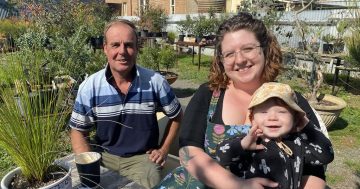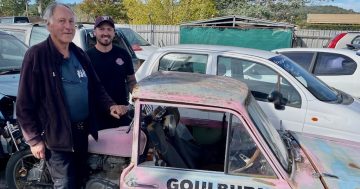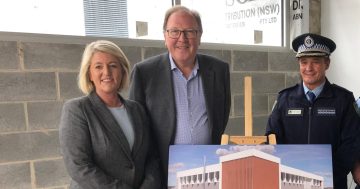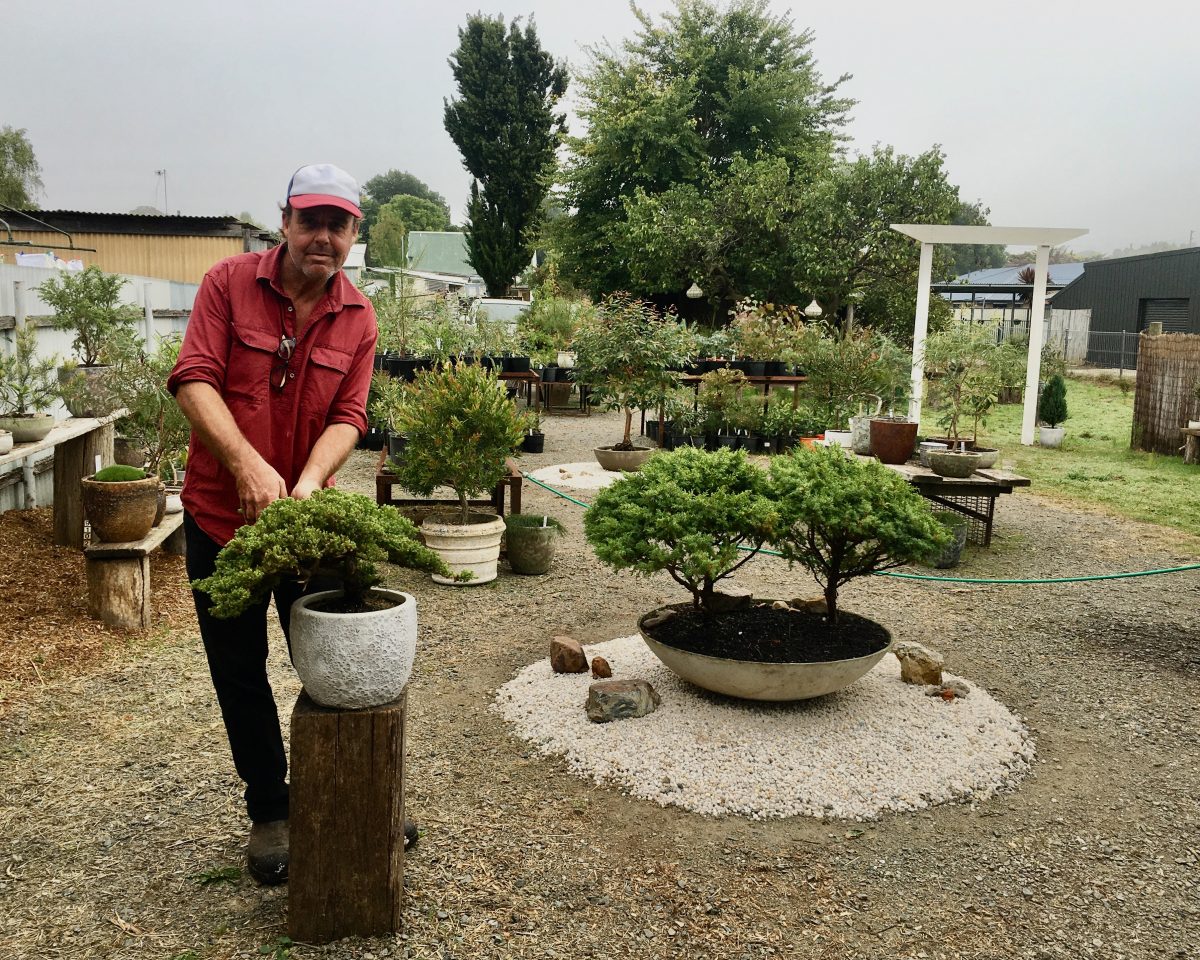
Michael Thorpe tends to one of his bonsai plants in Auburn Street, Goulburn. Photo: John Thistleton.
Milton Croker lifted the bonnet of a car to earn a living through the Great Depression in Goulburn. In the same corrugated-iron garage today, Michael Thorpe is lifting native plants out of their pots to begin turning them into bonsai specimens. Australian Native Bonsai opened its doors this month.
Michael loves Milton’s spacious workshop, which opened in 1929 on Auburn Street, well away from the central business district.
He wanted to turn it into a bonsai showroom but instead shares the historic space with his wife Juanita, who has filled it with flowers and a coffee machine.
Together they are running a small nursery of native bonsai, cut flowers and coffee for their neighbourhood.
The couple, who moved to Wayo between Goulburn and Crookwell four years ago, enjoy the history of the airy workshop with a freshly painted concrete floor. They have kept the Croker’s Garage sign, as did the previous occupant, Carr’s Garage.
A decade after the garage first opened, the Goulburn Penny Post reported Milton Croker was the district’s agent for Austin cars and specialised in motor service, including oxy welding of all metals.
“Mr Croker is a native of Goulburn, and is renowned for his mechanical ability, and under his personal supervision a staff of splendid mechanics attends to all motor repair work in the extensive and well-equipped workshops,” the paper said.
Today, Michael tends to the splendid specimens of potted Australian gum trees, fulfilling his passion for bonsai.
The couple’s former home at Berowra backed onto a national park, where towering red and spotted gums left Michael inspired by native flora.
He once earned a living attending to water filtration plants, as a courier, and as a limousine driver until he grew tired of the long hours on the road in busy Sydney.
He and Juanita left for Mudgee, but after six months felt they were too far from the people they knew, so they decided to buy a small plot of land at Marulan and began renting a property at Wayo with views as far as the eye can see.
Michael bought 400 baby plants when they moved to Wayo. About a year later, they were ready for lifting into attractive pots and he began taking them to markets at Exeter and Mittagong.
“Once I started doing the markets I kept buying more bits and pieces here and there, then we got sick of carting them all to the markets – loading up the car the night before and getting up at the crack of dawn,” he said.
Always interested in real estate and having owned a shop previously, Juanita found the old mechanic’s garage was on the rental market, and showed it to Michael, who was just as enthusiastic about the space and location.
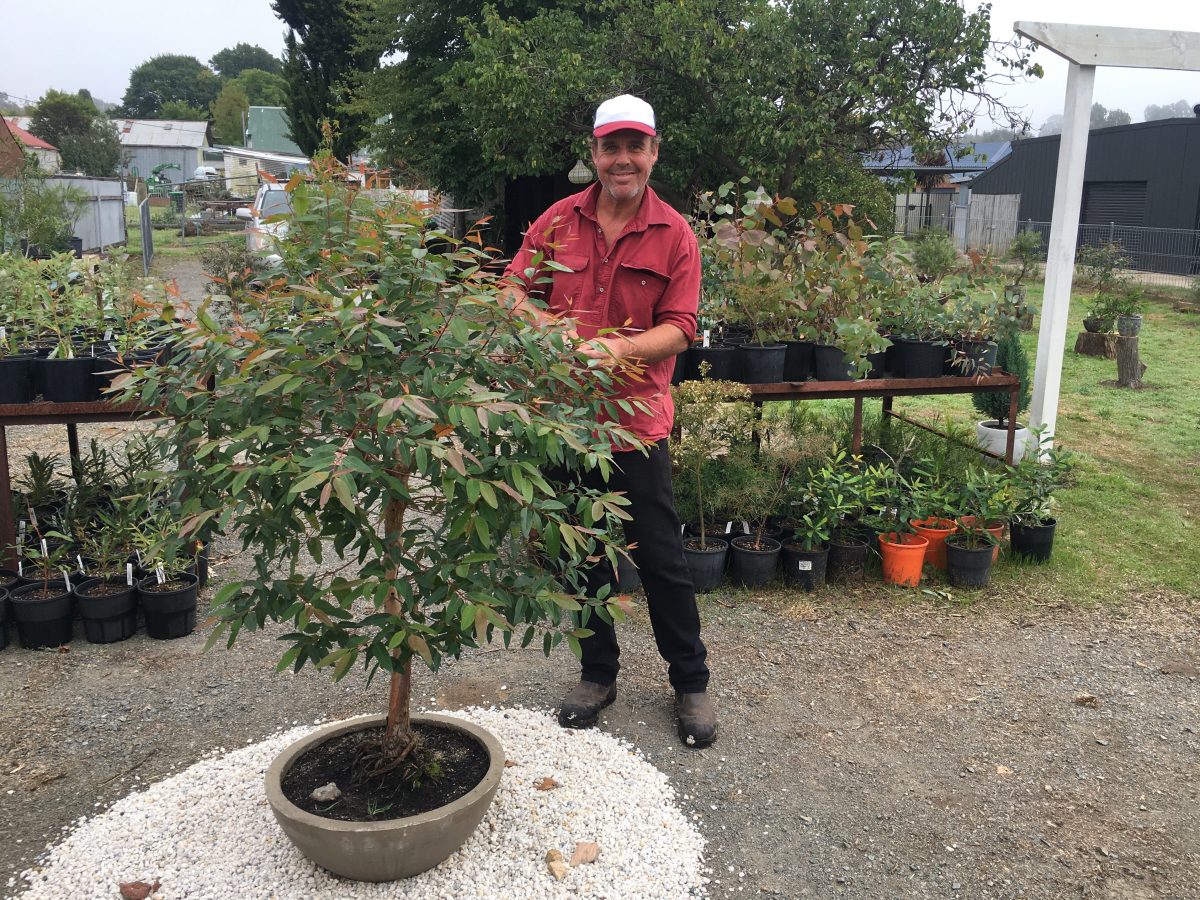
A blue gum takes shape in a shallow pot and has received plenty of water over the warmer months. Photo: John Thistleton.
“The backyard is perfect for me, it’s probably pretty rare to find a shopfront with a nice backyard,” he said. “The (rental) price was right. You pay $80 for a market stall, this rent is not all that much more than a month’s worth of markets,” he said.
Since signing a lease he has found plenty of room to “spread [his] wings” – and maybe even make a little pocket money.
Gum trees may not be an obvious choice for bonsai, nevertheless Michael buys them as 150mm-high tube stock, puts them into 200mm black plastic pots, grows them for about 18 months, and prunes them regularly throughout the growing season to develop good branch structure.
Once they start to resemble a miniature tree, he removes them from their pots, cuts the root ball in half and puts them into a nice-looking bonsai pot. Given plenty of water, in two to three weeks they are bursting back into life.
He is unsure of the rules around bonsai, or whether his potted gums exceed the limit.
“I’m not a great stickler for the bonsai rules, they have what is acceptable and what isn’t. But I’m a rogue, I will just do what I want with them,” he said with a laugh.
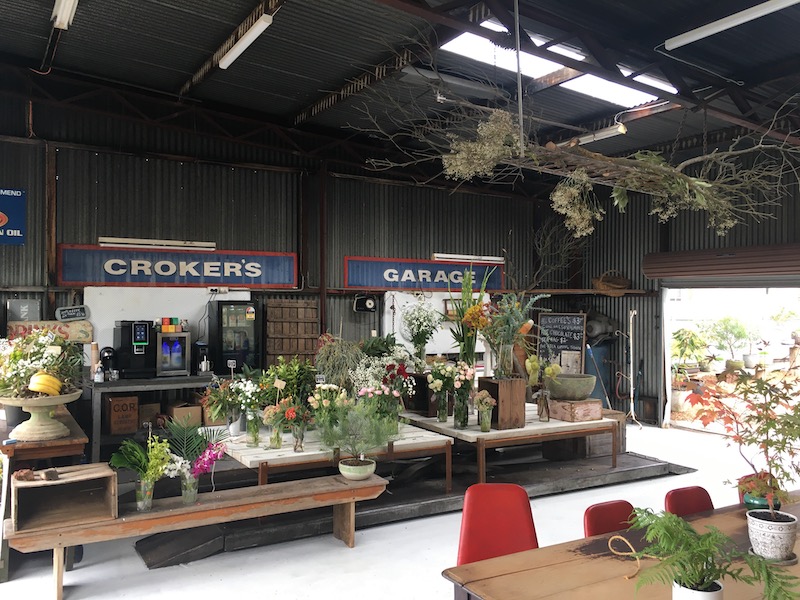
Croker’s Garage sign remains prominent in the new native bonsai nursery in Goulburn. Photo: John Thistleton.
“Sometimes I think the bigger the specimen, the bigger the wow factor and the more space you can fill in your home. On your balcony up against a wall they make a great statement, rather than something tiny.”
An ancient craft, bonsai is perfect for a couple who love being in the old mechanic’s garage surrounded by rustic furniture, signage and friendly neighbours popping in to share snippets of local history.







